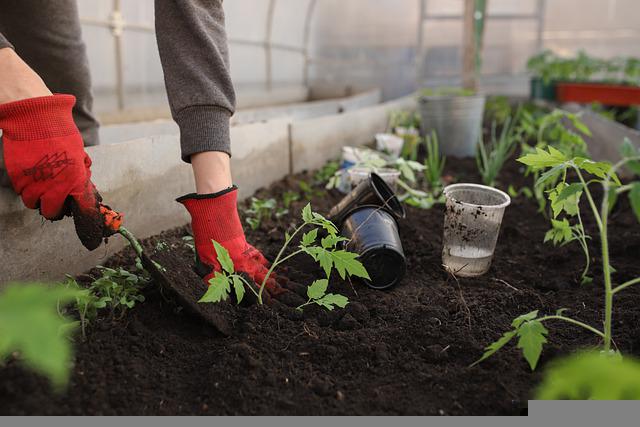
One of the most important things to remember in your pursuit of having a healthy garden is to keep the soil wet and moist. This shouldn’t be a problem during the rainy season. Once summer comes and it starts to get hot, that’s when you have to double your efforts in keeping it moisturized. Otherwise, you’ll start to notice withered, sad, and unhealthy plants.
You can tell that your soil is dry when water stays on top of the soil before it gets absorbed. This should give you a hint that you need to water more or do other gardening strategies to keep your soil’s moisture in.
Use these seven tips so you can keep your garden hydrated even during the dry season:
1. Add Organic Matter To Your Soil
Cow and chicken manure are good examples of organic matter to include in your garden soil. If you don’t have animals at home, you can also opt for a homemade compost pit made from organic food scraps and waste.
Other examples of organic matter you can add to your soil include:
- Blood and bone
- Coir peat, which is a sustainable resource from coconut fiber
- Worm castings and liquid
Adding organic matter to your soil can instantly improve its structure. This enables your garden soil to have that better ability to retain moisture, especially after watering.
2. Mulch
Mulching your soil is one of the best ways to retain moisture in your soil. In fact, mulching does more than just moisturize the soil. It also keeps the ground nourished while also suppressing weeds and slowing evaporation.
Mulching can be done with organic matter like bark, straw, shredded paper or cardboard, and leaves. You can also use pre-mixed, store-bought mulch for this purpose. Those can keep your soil well moisturized by moderating soil temperature and preventing runoff and evaporation.
Along this line, remember not to overdo it, otherwise you may swamp or crowd the breathing space of your plant when mulching. This would do more harm than good. For it to be healthy, the mulch should only be between one to four inches thick.
3. Place Windbreaks In Your Garden
Did you know that shrubs and a fence on your property do more than just provide privacy or delineate your area? They can also serve as windbreaks, particularly if you live in quite a windy area.
The wind may be good, but only moderately. Too much wind can cause water to evaporate more rapidly. This is the reason why watering more frequently is important during windy days.
4. Remove Weeds
Weeds are the unwanted plants in your garden as they compete for water and moisture. So, if your plants look sick and tired, check around for weeds as that may be the culprit. The more weeds, the drier your soil will be.
5. Layer In Garden And Lawn Clippings
Have you just had your garden or lawn trimmed? Those clippings can still be used one more time by layering them on your soil. A word of caution you have to remember, however, is to be certain that the weeds don’t have roots. Otherwise, when the weather permits it, those clippings may have an opportunity to re-root, now making them weeds.
Without the roots, garden and lawn clippings are effective in enriching the soil. Remember that lawn clippings are still leaves with lots of nutrients in them. Rather than letting those go to waste, layering them on your plants transfers the nutrients to the soil.
6. Try Out Polymer Moisture Crystals
Ideally, you want to stick to natural modes of keeping your soil moisturized. However, if all else has failed and you notice your plants are still in dire need of moisture, reaching out for synthetic products may not always be a bad idea. This is in the form of polymer moisture crystals. Your local nursery will usually have those for sale.
When applied to the soil, the crystals swell like gelatin once they come in contact with water. Rather than let the water evaporate, the crystals release their moisture, keeping the soil even more moisturized.
7. Prevent Soil Compaction
Knowing how to properly remedy your dry soil also entails getting to know more about the type of soil you have in your area. One of the worst you can have is clay soil as that’s the most prone to compacting and hardening.
If that’s the case, then you want to do all that you can to prevent it from compacting. A good practice is to avoid walking on them, especially those situated near plants. Walking compresses the soil, preventing water from reaching the roots.
A good practice would be to have walking paths made in your garden, so you never accidentally walk in those areas where the soil is hard. If not, then eventually your plants will start to suffer.
Conclusion
Wet and moisturized soil is the key to having plants that thrive. You don’t have to be an avid gardener to get upset when you see your plants dying. It’s not too late to take action. The more nutrients your soil has, the more hydrated it’ll be. In turn, you’ll see a happy garden with plants that don’t just thrive, they flourish. Now you know what to do to give your garden that much-needed TLC.
Hey welcome to my blog . I am a modern women who love to share any tips on lifestyle, health, travel. Hope you join me in this journey!

Speak Your Mind